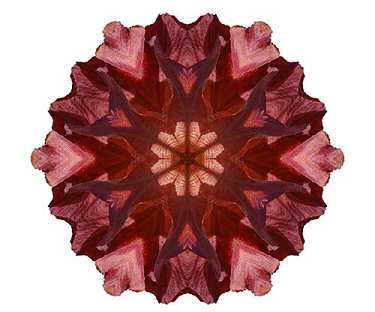1-2-8. SEEING THE DHAMMA见法
When we practice meditation and see colours, lights, ghosts and angels, this is a mistake. The Buddha teaches that whoever sees the Dhamma, sees the Buddha, whoever does not see the Dhamma, does not see the the Buddha, even taking hold of the Buddha's robe or His finger, is not reckoned as one who sees the Dhamma and the Buddha. This is a principle that should be understood properly, so one doesn't practice wrongly and one recieves the result of really seeing the Dhamma.
如果我们禅修时看到色彩、光亮、或鬼神,那就表示我们修错了。佛陀教导说:见法即是见佛,未见法即未见佛。一个人即使拥有佛陀的法衣或指舍利,也不能说是见法及见佛,这是一个必须善加理解的道理。我们没有修错的话,就能得到「真实见法」的果实。
People these days, some go and practice meditation and think that seeing a crystal ball is to see the Dhamma. Whatever method it may be, they try to see a floating crystal ball. At my home village lives a teacher who tried out meditation. Having sat down, he saw a crystal ball floating into his chest, that's what he said. This shows that he didn't understand how and why to practice meditation.
现在有些禅修的人认为看到水晶球即是见法,因此他们尝试各种方法,想要去看到漂浮的水晶球。在我的家乡有位练习禅修的老师,他说他打坐之后,会看到胸口有一颗水晶球,这就表示他不了解如何以及为何要修习禅定。
Another man was well educated and worked for a government enterprise, he went to practice at a monastery. He'd been doing it for 11 years. I asked him : 'What did you get from it and how do you do it ?'. He explained that he would sit cross-legged, with his eyes closed and recite Bud-dho Bud-dho, then the crystal ball came floating over. I asked him : 'Did you see it every time ?'. 'Sometimes only' he said, 'It's called a sign'. I said : 'What sign ?It's an illusion !'.
另外有个受过良好教育且在政府机构工作的人,他到一间寺院禅修,而且一修就修了11年。有一次我问他:「你这样修有得到什么吗?你是怎么修呢?」他解释说:他盘腿而坐、闭上眼睛并诵念佛-陀、佛-陀…,然后水晶球就会漂过来。我问他:「你每次都看到吗?」他说:「只有几次,这是一种禅相。」我说:「什么禅相?!这只是个幻觉!」
What sort of meditation is that, not seeing one's mind but seeing a crystal ball ? And so I suggested to try out the following : He had with him a suitcase and a pair of glasses, as soon as he had sat cross-legged and had his eyes closed, I moved his suitcase and glasses to another place, having finished that I told him to open his eyes. I asked him : 'What happened to your suitcase ?'. He said he didn't know. 'And what about your glasses ?'.
That, he didn't know either. So I asked him : 'Well then, is this way of practicing advantageous or disadvantageous ?'. He said : 'It does have disadvantages, things disappear'. This man, at that time, had a salary of more than 10.000 baht, I think he had a University degree. In the world, people with a degree like that are considered to have knowledge but he still didn't understand how to make meditation useful. The method of practice with the eyes open, that I teach, can be done anytime. Whoever passes is seen. The mind that thinks is known and seen. That is how I understand it.
没看到自己的心,却看到水晶球,这是哪门子的禅修啊?!所以接着,我要他照我的话去做:他有个手提箱和眼镜,当他盘腿坐下、闭上眼睛之后,我就把他的手提箱及眼镜拿到别处去,藏好之后我叫他张开眼睛,然后问他:「你的手提箱怎么了?」他说他不知道。「那么你的眼镜呢?」他也说不知道。于是我问他:「这样的话,你这种禅修方是有用还是没用呢?」他说:「不太管用,东西会不见。」这个人那时的薪水超过10,000铢,我想应该是大学毕业的。在现今社会中,拥有这样学历的人应该算是很有知识的了,但他还是不知道怎样才是正确有效的禅修。我教的这种张开眼睛练习的方法,随时随地都可以练,而且有人经过你可以看到,心里有念头也可以知道及看到,这是我了解的正确禅修方法。
As far as signs are concerned, it is the same : a sign is a mark or symbol, or something that perception knows, how it is perceived : well perceive it with awareness, catch the feeling of it. Like raising the hand and feeling it, that is a sign. When a thought comes up, one knows and sees it, this is called a sign.
至于禅相也是一样。所谓禅相是指心迹或心的表相,或可说是内心觉知到的东西。禅修时我们该如何觉知这些东西呢?要用觉性好好地觉知它、感觉它,就像提起手时,感觉到它,这就是禅相;当念头生起时,知道并看见它,这就叫禅相(不是指禅修时出现的相,而是指当下觉知的相——真是妙解)。
As for people who do sitting meditation and want to see crystal balls or Buddha images, but don't see their own minds : when the mind suddenly thinks, they don't see it, sitting right here but the mind is all over the place – practicing like that is not useful, it is illusion. I dare to guarantee that meditation with eyes open can be used while working, no matter what you're doing. The mind thinks or cheats and we know it. When people come to sneak or steal something, we know it. When suffering arises we don't latch on to it. When the mind wants to get happiness, we know it to be not the right way of thinking ; today's happiness is tomorrow's suffering, that's how it is.
至于那些坐禅想看到水晶球或佛像而没看到自心的人,当念头剎那生起时,他们看不到念头,所以人坐在那里可是心却到处乱跑,像这样的练习是没有用的,那是在打妄想。我敢保证我教的方法绝对有用!无论你是做什么工作,张开眼睛的禅修方法都可以应用到工作当中。当心里有念头或想骗我们时,我们会知道;当外面有人偷偷摸摸地靠近或来偷东西,我们也会知道。当内心生起苦恼时,我们不会抓到苦恼;当内心追求快乐时,我们会知道这不是正思惟,知道今天的快乐是明天的苦恼。我教的禅法就是这样!

So we have to see the Dhamma within ourselves, not seeing a Buddha statue or image, it's not like that, the Buddha died a long time ago !
If that is right, then who is the Buddha, who is the real Buddha ? The Buddha is the state of cleanliness, brightness and peace. Clean means normality of mind without stains. Bright means knowing and seeing the feelings and thoughts arising in one's own mind. Peace means that the mind is without thoughts of greed, hatred and delusion. Thoughts of greed, hatred and delusion are suffering. Therefore the Buddha teaches that it is only suffering that arises, suffering that establishes itself and suffering that passes away.
So in practicing meditation and seeing the Dhamma, we have to see our very own thinking, not seeing lights, colours, ghosts and angels.
所以,我们必须看见自己身心内在的法,而不是去看见外在的佛像或什么影像,禅修不是这样的,佛陀老早以前就死了(怎么见呢)!就算那是对的,那请问哪个才是佛陀呢(现在看到的这个还是以前死去的那个)?又,什么才是真正佛陀呢!?佛陀是指清净、光明、寂静安祥的心灵质地。清净是指没有染污的平常心;光明是指知道和看见心中的感觉与念头;寂静安祥是心中没有贪瞋痴的念头。贪瞋痴的念头就是「苦」!因而佛陀只教导「苦」的生起、「苦」的原因及「苦」的止灭。所以所谓禅修与见法,是要看见我们自己的念头,而不是看到光、色彩、或鬼神。